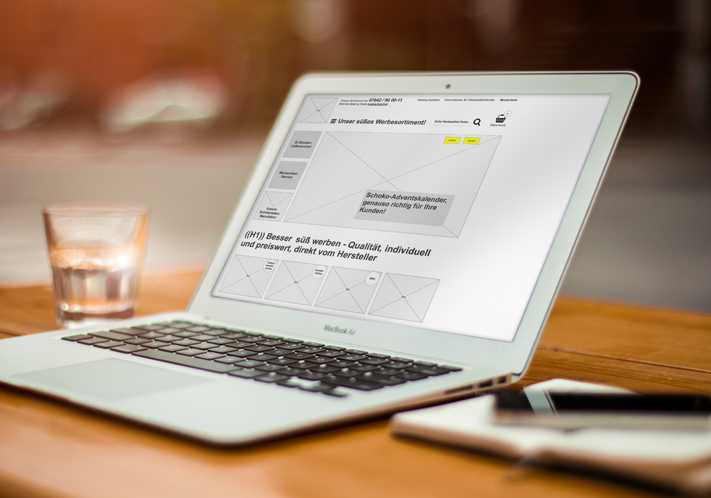Make the internet accessible to all!
Accessible web, what does that actually mean?
When we hear the term accessible web, most people think of a web that is specially designed for people with severe disabilities, such as the blind or deaf. But anyone who needs simple reading glasses knows how difficult it can be to read longer texts on the web. These are minor problems, but they also represent a barrier.
In principle, accessible pages are easier for all users to grasp and use. Accessibility simply means making the internet as accessible as possible - for everyone.
Accessibility is an interdisciplinary topic that affects all areas of web development, from conception and design to technical implementation and editorial maintenance.
Web Content Accessibility Guidelines 2.0 (WCAG 2.0) were published by the World Wide Consortium (W3C) in December 2008. They are a comprehensive guideline for the development of accessible websites. The WCAG 2.0 defined four basic principles that define the framework for the implementation of accessible websites.
The WCAG form the basis of the BITV (Barrier-free Information Technology Ordinance). This ordinance applies to all digital offerings of all authorities of the federal administration. At Länder level, the so-called Land BITV applies.
The BIK BITV-Test test is a procedure for comprehensive and reliable testing of the accessibility of websites and web applications.
Assistive technologies are aids for the operation of web offers, in particular screen readers, speech input and magnification software.
The basic principles of accessibility
The Web Content Accessibility Guidelines 2.0 (WCAG 2.) define the so-called POUR principles for accessible web offerings. POUR stands for:
- Perceivable,
- Operable,
- Understandable,
- Robust.

Perceptibility
All content and functions of a website must be implemented in such a way that they can be perceived without restriction. This also includes the suitability of the site for the use of assistive technologies, e.g. screen readers.
Perceptibility concerns above all the following aspects:
- Text readability (fonts, font sizes, contrasts, etc.)
- Text alternatives for images, audio and video
- Colour and text recognition of UI elements (e.g. when a form is entered incorrectly)
- Clean HTML structure (e.g. order of headlines: H1, H2 etc.)
Usability
The most important points for the usability of a website relate to the possibility of operating the entire site using only the keyboard or a screen reader. This must be considered conceptually from the beginning and implemented accordingly in the frontend code. Elements such as breadcrumbs or a sitemap provide orientation and help to make the page easier to use.
The issue of usability should also be taken into account for PDFs. The focus should also be on a good structure of the document.
Comprehensibility
All contents and functions of the website should be readable and understandable. Understandable refers to the language itself and the logical structure of the page. Consistent navigation is important, as is the predictability of the structure. In the case of forms, this is about error recognition and sufficient labelling and marking.
Robustness
In terms of accessibility, a website is described as robust if it can be correctly interpreted by the greatest possible number of users and technologies. The focus here is on technical factors such as fundamentally valid HTML, correct WAI-AIRA roles and many other aspects.
Accesible Design
Accessible web design starts with the development of the information architecture and the basic structure of the different page types and maintains its relevance in all visual aspects of the website. Typography with a focus on readability, minimum contrasts, consideration of colour vision deficiencies and understandable UI elements and error formatting are core tasks in the development and implementation of accessible designs.

Easy language
Easy language opens up access to information and communication for people with cognitive disabilities, but also addresses all people who do not speak German well.
There are now clearly defined rules for easy language, such as the avoidance of convoluted sentence constructions and the use of simple, familiar words. Supplementary graphic representations are often used in the context of easy languages.
Certification
For many organisations, certification is mandatory; for companies, it is primarily a means of additionally increasing the quality of their website. Common test criteria are, for example:
- Usability without mouse
- Flawless use of screen readers
- Faultless use of the keyboard
- Testing and use of alternative texts
- Skip-to-content button
- Use of language attributes (lang tags)
If certification of the website is sought, a content briefing should be carried out beforehand in order to define the requirements (e.g. corporate design often conflicts with the test point "contrast"). It is recommended to have a development-accompanying test carried out by the certification agency before certification.